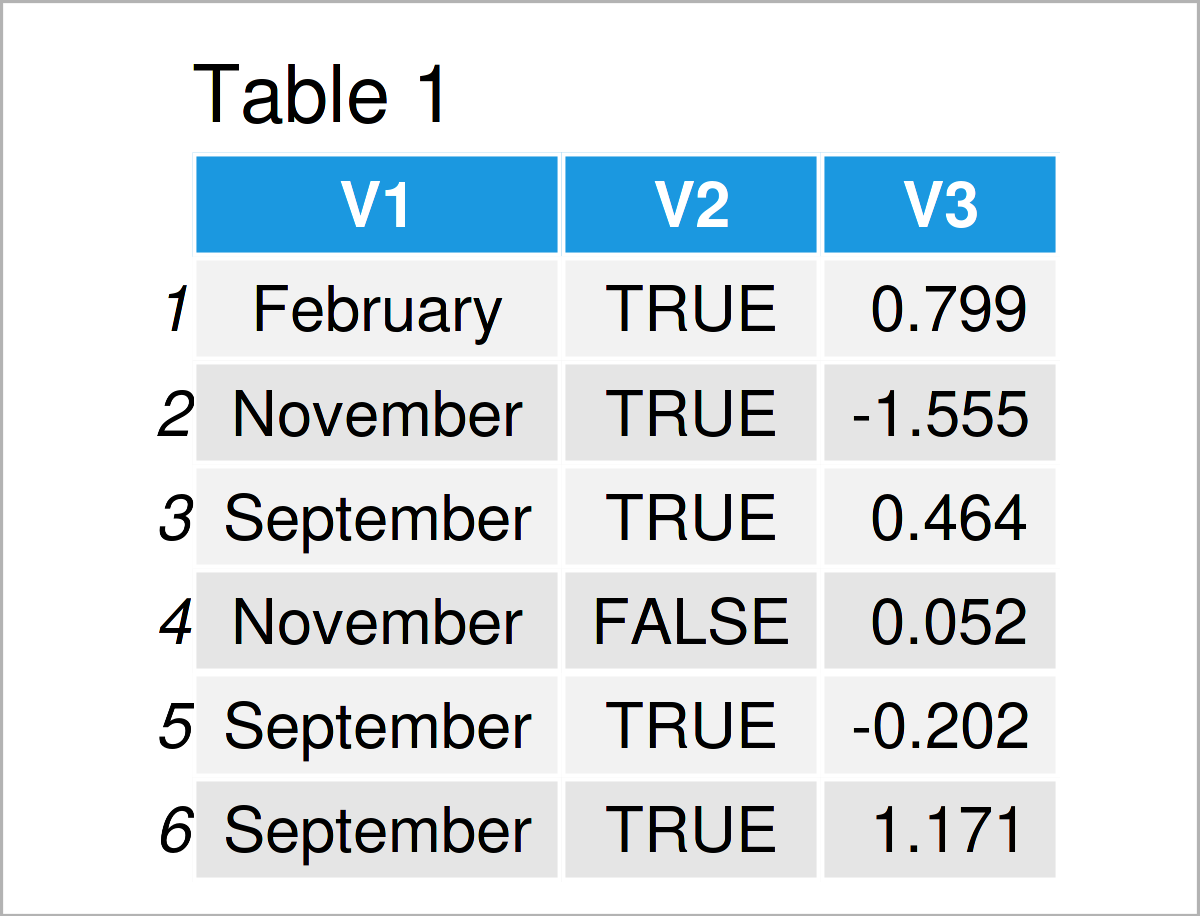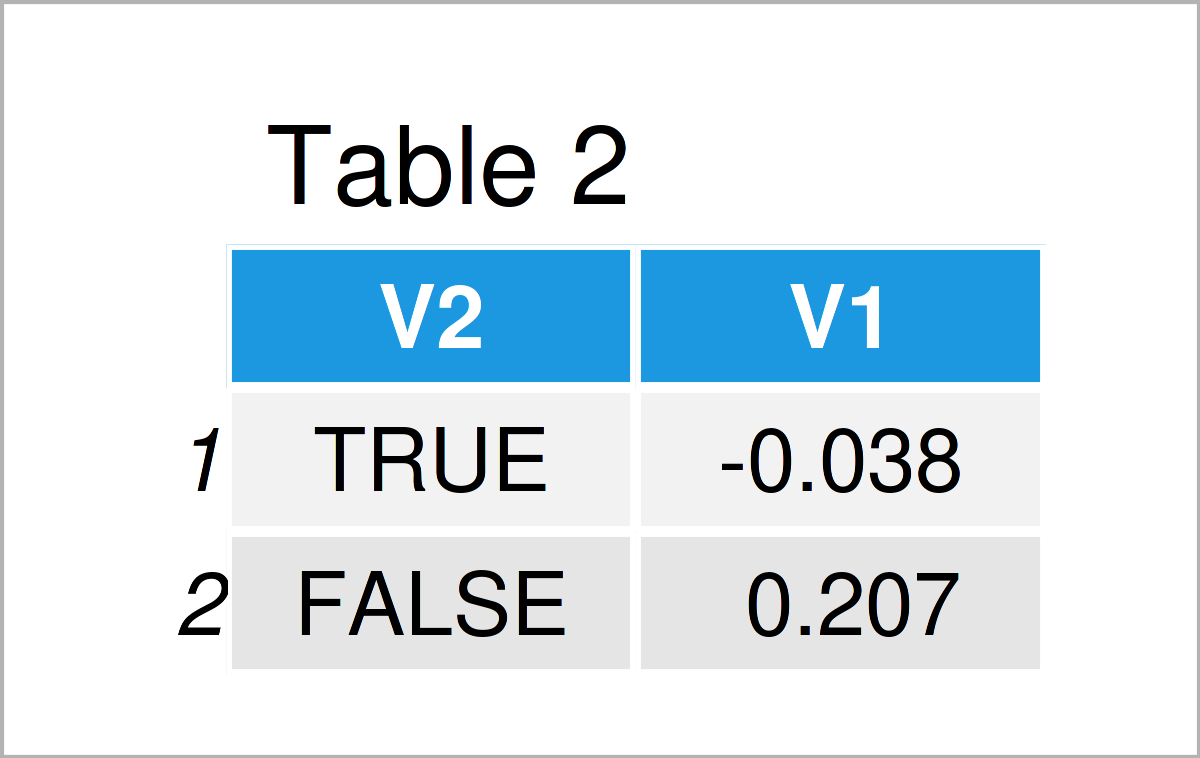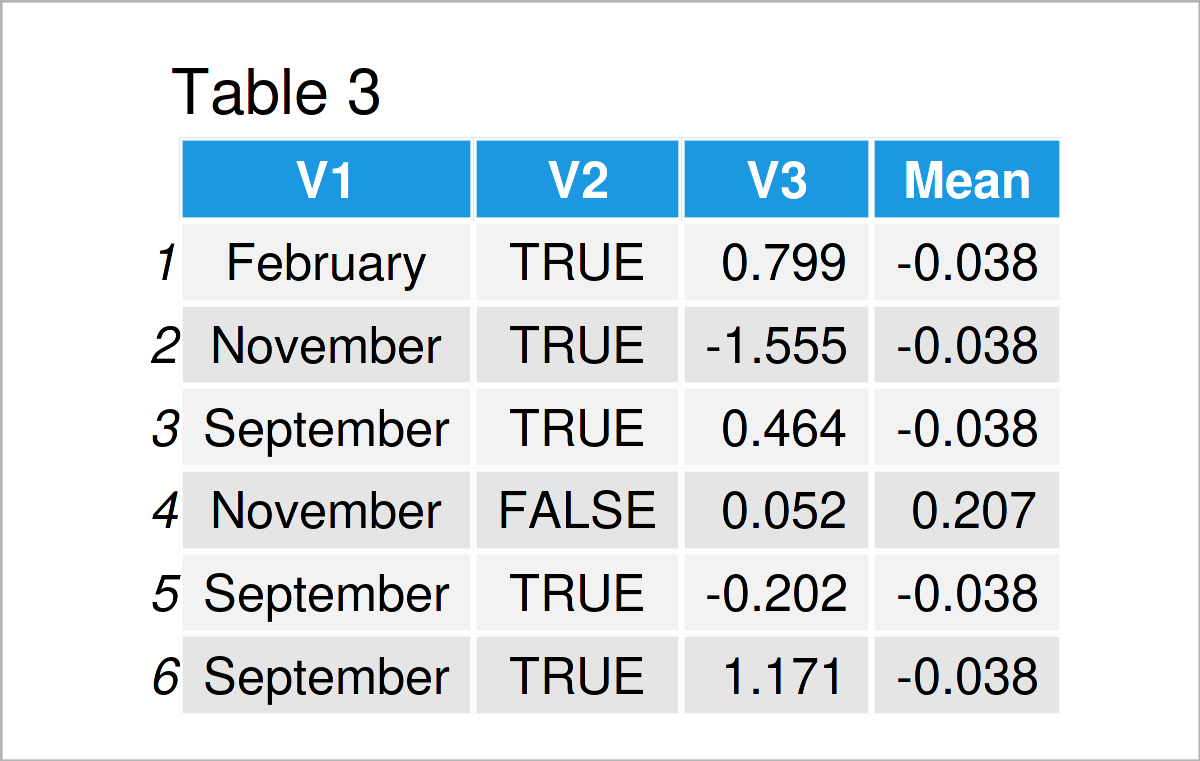Summary Statistics for data.table in R (4 Examples)
On this page, you’ll learn how to apply summary statistics like the mean or median to the columns of a data.table in R.
The post will consist of these topics:
If you want to know more about these content blocks, keep reading!
Example Data & Packages
If we want to use the functions and commands of the data.table package (see our introduction here), we first have to install and load data.table:
install.packages("data.table") # Install data.table package library("data.table") # Load data.table package
I also have to create some example data:
set.seed(5) # Set seed dt_example <- data.table(V1 = sample(month.name[1:12], 100, replace = TRUE), V2 = sample(c(TRUE, FALSE), 100, replace = TRUE), V3 = rnorm(100)) # Create data.table head(dt_example) # Print head of data

As you can see based on Table 1, our example data is a data.table composed of three columns.
Example 1: Calculate Mean Values for Groups
In this example, I’ll illustrate how to calculate the average values of certain columns.
Calculate the mean value of variable V3.
dt_example[ , mean(V3)] # Mean of V3 # [1] 0.05539609
dt_example[ , mean(V3), by = V2] # Mean of V3, by V2

By running the previous R code, we have created Table 2, showing the mean value of variable V3 for each unique value of variable V2.
Example 2: Create new Column with Summary Statistic: Mean values
In this example, I’ll demonstrate how to use summary statistics to generate a new column in data.table.
dt_example_2 <- dt_example[, "Mean" := mean(V3), by = V2] # Create new column "Mean" head(dt_example_2)

In Table 3 it is shown that we have constructed a new column called Mean which contains the average values of variable V3 for the unique values of variable V2.
Example 3: Show Several Statistics
The following R programming syntax illustrates how to display several summary statistics at once in data.table.
dt_example[, list("mean" = mean(V3), # Calculate summary statistics "var" = var(V3), "median" = median(V3), "min" = min(V3), "max" = max(V3), "quantile_95" = quantile(V3, 0.95))]

The output of the previous R code is visualized in Table 4 – it contains multiple statistics of variable V3. Some basic descriptive and summary statistics are also included in the summary() function in R which can be used as shown in the code below.
dt_example[ , summary(V3), ] # Min. 1st Qu. Median Mean 3rd Qu. Max. # -2.62134 -0.51192 0.06732 0.05540 0.75049 2.24625
Example 4: Frequency Tables
Within data.table, we can also create frequency tables. The following R programming syntax illustrates how to calculate the frequency table of the two variables V1 and V2.
dt_example[, table(V1, V2)] # V2 # V1 FALSE TRUE # April 5 4 # August 3 6 # December 4 6 # February 2 5 # January 5 3 # July 1 3 # June 6 4 # March 1 6 # May 3 3 # November 5 7 # October 1 8 # September 2 7
Video & Further Resources
Would you like to learn more about the calculation of descriptive statistics of data.table columns? Then I recommend having a look at the following video on my YouTube channel. In the video, I’m illustrating the content of this page in RStudio:
The YouTube video will be added soon.
Furthermore, you could read the other tutorials on this homepage:
- Add Row & Column to data.table in R (4 Examples)
- Replace NA in data.table by 0 in R (2 Examples)
- Calculate Multiple Summary Statistics by Group in One Call (R Example)
- How to Compute Summary Statistics by Group in R
- R Programming Overview
Summary: In this tutorial, I have demonstrated how to use summary functions inside data.table in the R programming language. If you have any further questions, don’t hesitate to please let me know in the comments below.
This page was created in collaboration with Anna-Lena Wölwer. Have a look at Anna-Lena’s author page to get additional information about her academic background and the other articles she has written for Statistics Globe.







